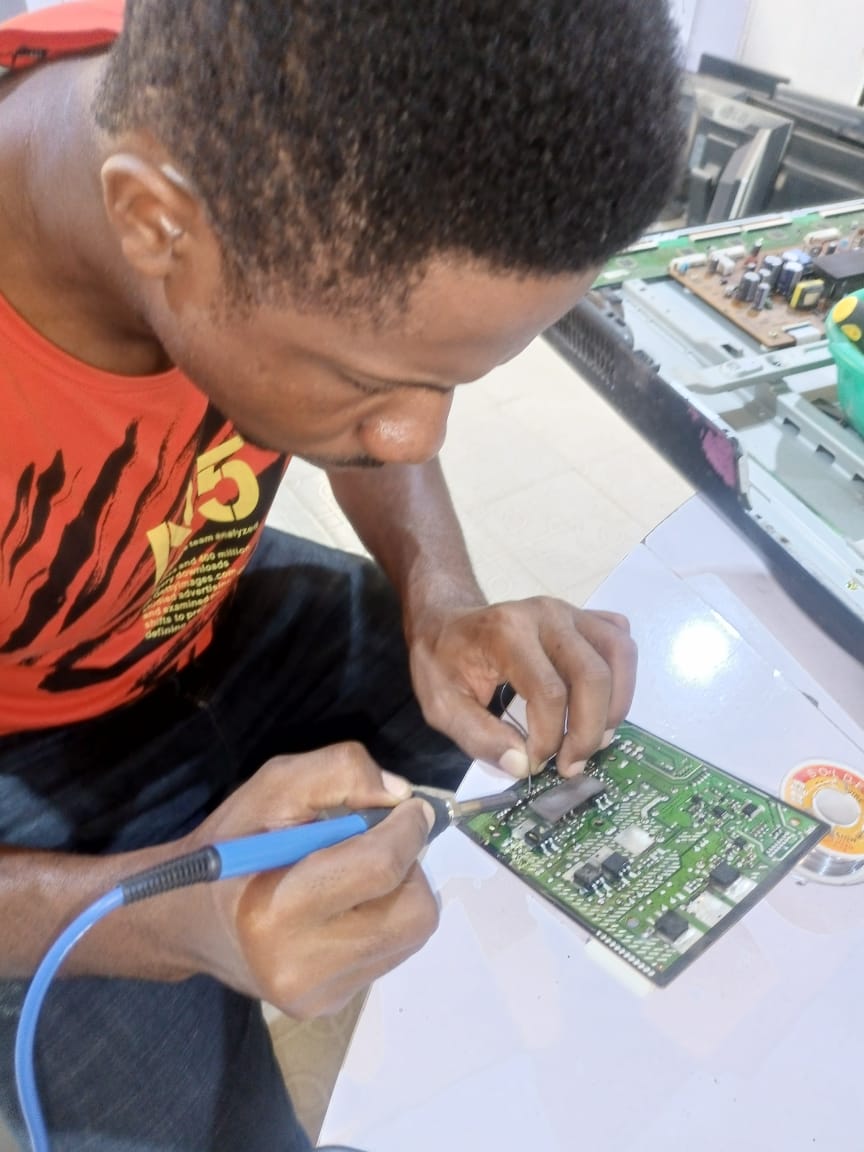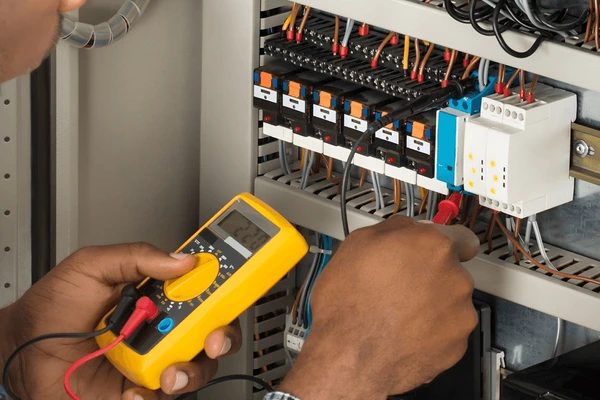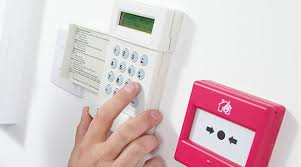The Electronic Repair and Maintenance Course aims to teach students how to handle and fix electronic devices.
This course is for anyone interested in learning comprehensive practical skills for troubleshooting, fixing, and maintaining all kinds of electronic devices like TVs, DVD players, mobile phones, IPADs, PCs, LCD, LED, and laptop motherboards. They are the target audience for this course.
Audience
- Electrical and Electronic Technicians
- Design electrical /electronic engineers
- Electrical /electronic supervisors
- Plant electricians
- Operations & maintenance engineers, supervisors & technicians
- Maintenance technicians
- The technicians and maintenance engineers from different organizations.
- Students, NYSC corp members, graduates from tertiary institutions, job seekers can start a new career electronic technician.
- Those interested in self-employment or interested in working in companies as technicians.
- Students, NYSC and Job seekers
Learning Objectives
Graduates of the Electronics Equipment Repair course possess both the practical “Hands-On” skills needed in the industry and the academic knowledge required for certification. Upon successful completion of the course, participants will have the skills and experience necessary to:
- Be aware of how crucial it is to take safety measures while working with both AC and DC electrical circuits.
- When troubleshooting, an analog/digital multimeter is used to measure voltage, current, resistance, and continuity.
- Distinguish between circuits that are AC and DC.
- Take electronic components off of PCB boards and solder them on.
- Keep PCB boards away from water, vibration, and moisture.
- To clean PCBs, use the appropriate chemical sprays.
- Gain an understanding of the operation of electronic components through diagrammatic explanations.
- Determine the resistor, potentiometer, and capacitor codes.
• Locate and test the majority of the necessary electronic parts so that electronic equipment may be troubleshooted.
• Consult books on semiconductor substitution and use search engines to choose the finest replacement parts.
• Recognize the specifications included in datasheets and semiconductor part numbers.
• Examine standard equipment’s fundamental electronic schematic diagrams.
• Develop their soldering and testing abilities.
• Understand where to get electronic parts both domestically and abroad.
• Examine how the ESR and Ring Tester, two types of specialist testing equipment, work to examine various electronic components.
• Recognize the significance of grounding wires made of pure copper.
Examine a DC circuit board to see how much the operation of the circuit can be affected by a dangerous component.
• Diagnose and fix a circuit board that has components that are essentially harmful.
Recognize strategies for - Acquire a technical mentality and expertise, think critically (i.e., solve problems and develop answers), and do technical tasks with little to no supervision.
• Examine schematic diagrams for circuits.
• Recognize the reasons for power blink issues and a power supply’s fluctuating (unstable) output voltage when it is turned on.
• Recognize why, even if the output measures are appropriate, the power supply cuts off as soon as the load is attached.
• If there are no blown parts in the power supply, begin troubleshooting.
• Use a DC ammeter, light bulb, and flickering approach to isolate power supply issues and expedite the repair procedure.
• To duplicate EEPROM/Flash ROM data for troubleshooting, use a basic EEPROM/Flash ROM Programmer (Copier).
Course Outline
Electronics Materials
- Introduction to materials
- Conducting materials
- Insulating Materials
- Magnetic Materials
- Semiconductor Materials
Passive devices
- OHMS Law,
- Insulation,
- Diodes,
- Conduction
- Capacitor
- Inductor
Switches and Relays
- Switches
- Fuses
- Relays
Cales, Connections and Transformers
- Wire
- Cables
- Connectors
- Transformer
Displays Devices
- Light Emitting Diode
- Liquid Crystals Display(LCD)
- Incandescent Lamp
- Gas Discharge Display
- Fluorescent Display
- Dot Matrix, Segmental Display and Important Definition
Microphone and Speakers
- Microphone
- Speaker
Fabrication of Integrated Circuits
- Monolithic Integrated Circuit
- Hybrid Integrated Circuit
- Discrete Components and IC Laminate
Printed Circuit Board
- Laminates and Copper clad Laminate
- Single-Sided PCBs.
- Double-Sided PCBs.
- Multilayer PCBs.
- Rigid PCBs.
- Flex PCBs.
- Rigid-Flex PCBs.
- Printed Components and PCB Processing
Semiconductor Devices
- Semiconductor Diode and Unjunction
- Transistors
- Semiconductor Power devices
Fault-finding and Repair techniques
Diagnosing and rectifying faults on circuits built during course.
Health & Safety, Care of Tools and instruments for assembly and repair of electronic devices.
General Session on repair and fixing different types of electronic gadgets, troubleshooting, fixing and maintaining all types of electronic gadgets like TV, DVD Players IPADs, PCs, LCD, LED, 0LED, Laptop (motherboard) etc.
Upon the end of this electronics troubleshooting and repair training, the target competencies will:
- Identify causes of electrical faults.
- Recognition of unsymmetrical faults in transformers.
- Partial discharge phenomena and how to apply the required analysis.
- Representation of unsymmetrical faults in a power system.
- Simulation for protection relay configuration.
A vast range of issues can arise with electronic devices. The purpose of troubleshooting is to eliminate issues and ensure that the equipment functions as intended. Gain knowledge of different troubleshooting approaches and troubleshooting procedures with this training.
Electronics troubleshooting and repair involve a systematic approach to diagnosing and fixing electronic malfunctions. A training course equips individuals with the knowledge and skills to identify problems and implement solutions effectively. Practical electronics troubleshooting techniques are critical in resolving a wide range of issues, from simple to complex.
A structured electronics repair course is invaluable for those learning electronics repair. Such courses typically include hands-on training with essential electronics repair tools and equipment. Additionally, an electronics repair guide can be a helpful reference, providing step-by-step instructions for everyday repair tasks.
Basic electronics repair training lays the foundation for more advanced troubleshooting and repair work. Understanding how to use various electronic repair tools and equipment is crucial for effective repairs. By mastering the fundamentals of electronics troubleshooting and repair, individuals can confidently tackle various electronic issues, ensuring devices function optimally.
After the completion of this course, the students will be able to understand how to identify, troubleshoot and fix/repair several problems on electronic gadgets.





